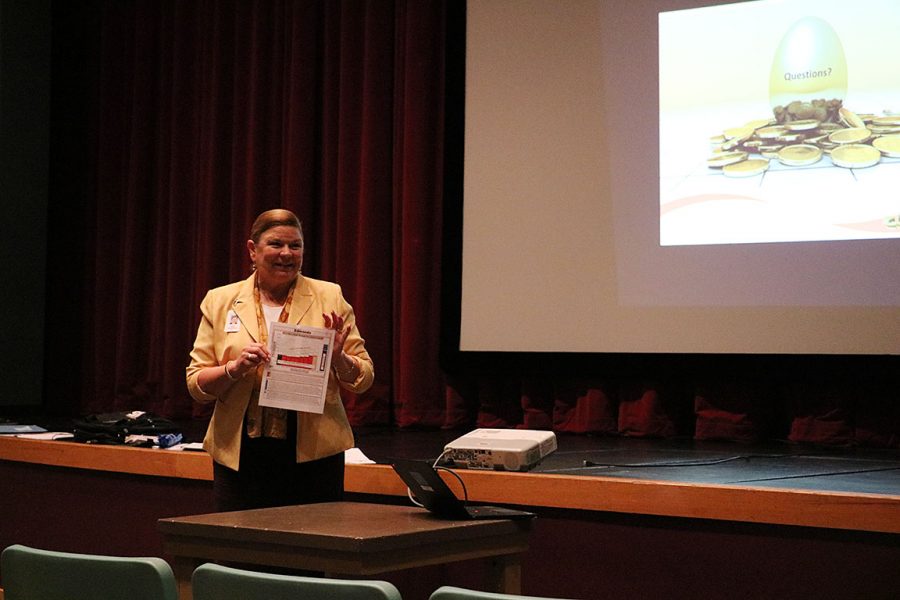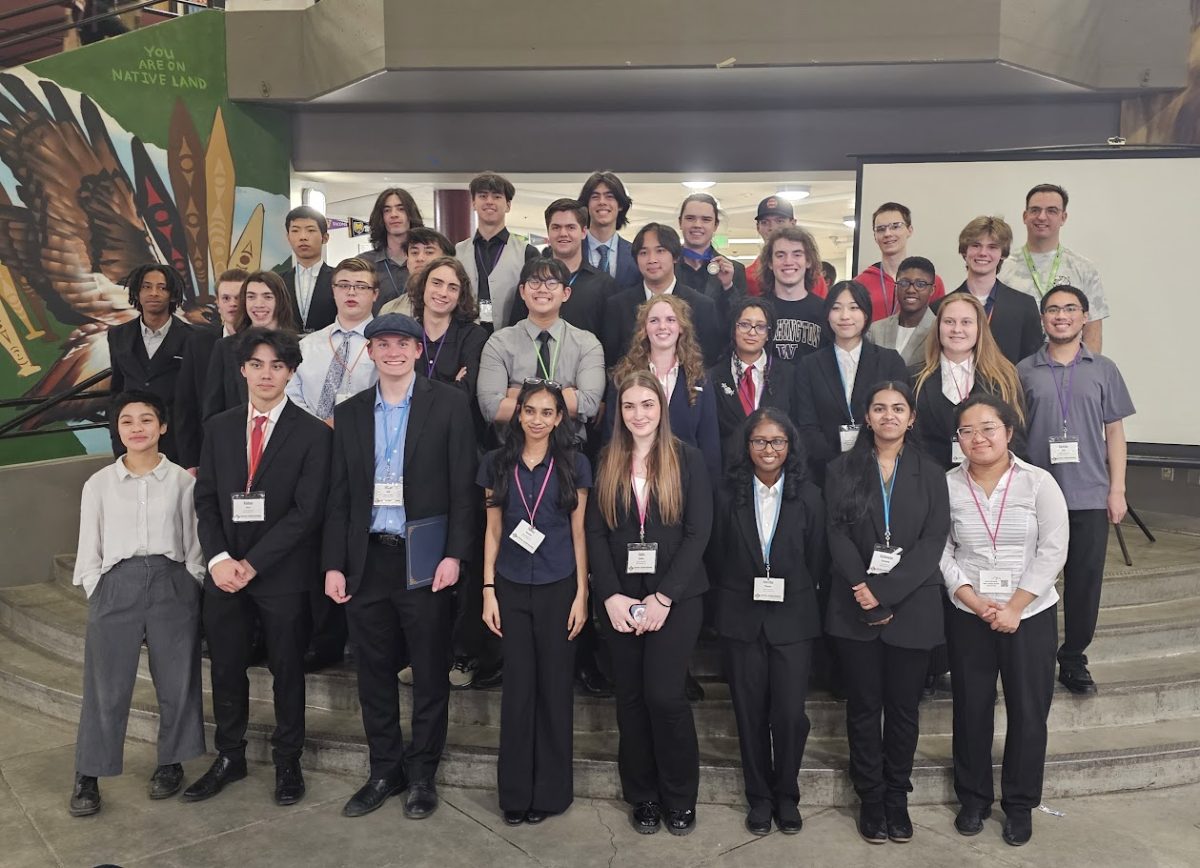Superintendent Kris McDuffy and Director of Business and Operations Stewart Mhyre hosted a community forum, a “Finance 101” budget input session, in the MTHS theater earlier beginning at 4 p.m.
Mhyre began with a quick PowerPoint presentation outlining what school programs ESD schools are to fund along with where the money is collected from and where it is allocated throughout the district.
He explained that ESD funds ASB-related things, such as extracurriculars, transportation that specifically adheres to buying regular school buses, capital projects, such as new school buildings and major renovations and debt services used to repay bonds.
He also clarified few confusions, explaining that the district is not paid by the state in 12 equal payments throughout the year, but in various amounts. Furthermore, the district is not required to fund after school activities, such as clubs. Also, the money provided by the state for teacher salaries only covers base salaries -any extra money toward teacher salaries is covered through local levies.
He also explained just how ESD funding is provided. About 22 percent from local levies, nearly 2 percent from local nontax, 68 percent from the state and just over 6 percent from the federal budget. The rest, “other,” is about 2 percent.
However, with the “levy cliff” set to cut local levies starting January 2018, there will be a hole in the budget of significant revenue. Where it will come from is the main question.
Funds are spread across five different areas: salaries and benefits with the most at 84 percent, supplies and materials following with 4 percent, contract and construction servicing with almost 10 percent, capital outlay at .1 percent and travel with the least at .04 percent.
McDuffy mentioned the federal government’s budget plan to cut education funding, but assured that since only 6 percent is collected through that budget, ESD would not see a significant decrease.
The first reading of the 2017-2018 school year budget is scheduled for July 11 with the final adoption scheduled for August 8.
McDuffy also mentioned to the McCleary case, the Supreme Court’s requirement that Washington state amply fund public education. She said that, while progress can be seen in the budget, it’s not anywhere close to what the state is required of -about $4,000 short for the 2017-2018 school year.
She also said that it’s fascinating to see the state legislatures in Olympia, Wash. working toward “the long overdue fix” for education funding.
However, of these solutions, McDuffy does not want to see cuts toward other school programs. She said that she would prefer for a new source of revenue as opposed to using the money from other school organizations to fill in the gaps elsewhere.
The next budget is scheduled for April 19 from 7 to 8 p.m. at Edmonds Woodway High School.









